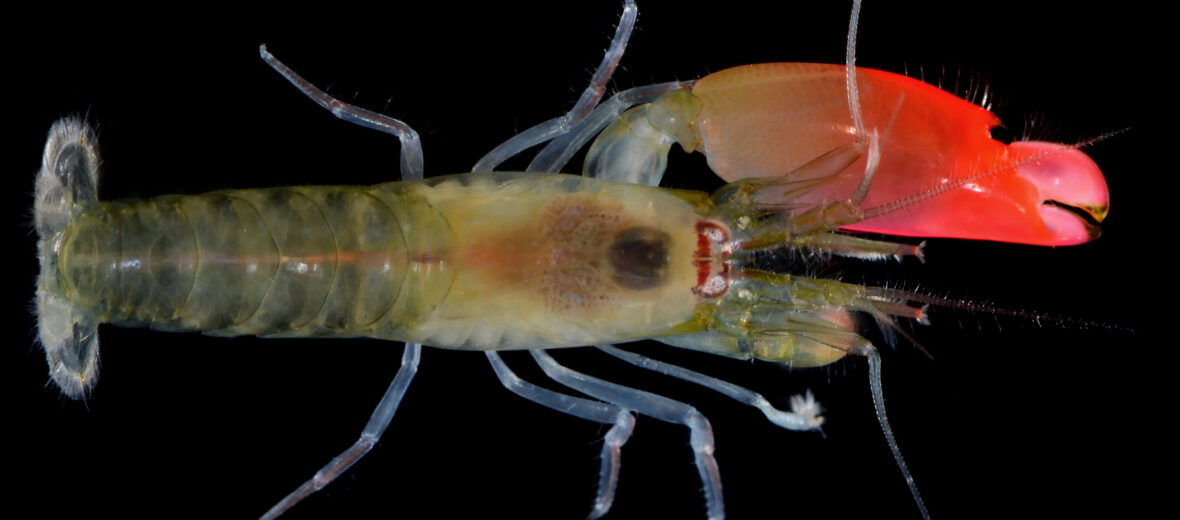
The pistol shrimp, aka the snapping shrimp or alpheid shrimp, is a simple little crustacean with a power packed secret… a claw powerful enough to stun and even kill. These gun slinging critters pack a heck of a punch and are even in competition with sperm whales as being the loudest creature in the sea. They prefer coral reefs, oyster reefs, and seagrass flats in both fresh and salt water environments. They easily stand out in a line up as they have a small claw and a huge claw that is as large as nearly half their total body length. This article is on special request from my friend, Jasmine.
First the Stats…
Scientific name: Alpheidae
Length: Up to 2 inches
Lifespan: Up to 4 years
Now on to the Facts!
1.) Their claw can regenerate. That’s right. If they lose their snapping claw, a new regular sized claw grows in its place and the remaining claw grows to become the snapping claw.
2.) Even though they are tiny, they are considered a major source of noise in the ocean. Even, at times of social gatherings, interfering with sonar devices.
3.) When hunting, the pistol shrimp opens the hammer portion of its claw, then releases it, allowing it to snap into the anvil portion. This release is incredibly fast and yields a powerful low-pressure cavitation bubble.
4.) Pistol shrimp are blind. So they make friends with gobies. The gobies dig a safe tunnel that the shrimp uses to retreat to. When the watchful goby retreats to its den in a hurry, the movement is sensed by the shrimp, who also retreats.
5.) The bubble created by their telltale snap rushes out at 62 mph!
But wait, there’s more on the pistol shrimp!
6.) In conjunction with the sound, speed, and heat, this bubble creates a flash of light known as sonoluminescence.
7.) The entire event of the snap takes place inside of 300 microseconds!
Did you know…?
It is capable of producing a sound reaching 218 decibels! This is louder than a jet engine. They are even able to break glass. For this reason, people wanting to keep them in aquariums need to house them in acrylic enclosures. The bubble that is created by the snap is up to 18,000°F!
8.) Pistols are monogamous (mate for life).
9.) Females incubate her eggs under her abdomen. The larvae hatch into planktonic larvae. They will molt several times before settling on the bottom to start life in their final shrimp form.
10.) Groupers, triggers, lionfish, hawkfish, and others hunt pistol shrimp… carefully.
Now a Short Pistol Shrimp Video!
Also, check out the Critter Science YouTube channel. Videos added frequently!
Want to suggest a critter for me to write about? Let me know here.



